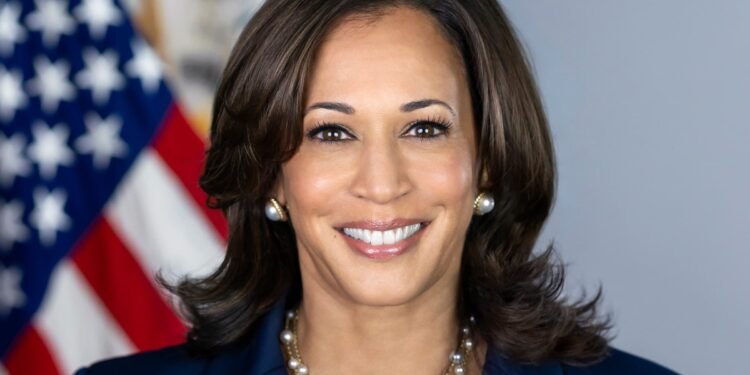The current role of Kamala Harris as the Vice President of the United States stands as a monumental milestone in American history. As the first woman, the first Black woman, and the first individual of South Asian descent to hold this esteemed position, Harris’s ascension represents a groundbreaking shift in the political landscape. Her achievements resonate deeply within the context of a nation that has long grappled with issues of gender and racial equality.
Her potential to become the first woman president amplifies the significance of her current role. This possibility is not just a matter of breaking a proverbial glass ceiling but also a reflection of evolving societal norms and the increasing inclusivity within the highest echelons of political power. The conversation surrounding her potential presidency is not merely speculative but is rooted in the tangible changes she embodies and the broader implications for future generations.
Harris’s journey to the Vice Presidency was marked by several key milestones. Before serving as Vice President, she was elected as the first African American and first woman to serve as Attorney General of California. Her subsequent election as a U.S. Senator further cemented her status as a trailblazer in American politics. Each of these roles has not only showcased her capabilities but also set precedents for what is possible for women and people of color in leadership positions.
In the broader historical context, Kamala Harris’s potential presidency would symbolize a significant leap forward in the ongoing quest for equality and representation. It would reflect a culmination of decades of social progress and serve as a powerful testament to the changing face of American leadership. The anticipation surrounding her possible future presidency underscores the importance of her current achievements and the hopeful trajectory they set for the future.
Harris’ Political Journey
Kamala Harris’s political career is marked by significant milestones and achievements that underscore her qualifications for higher office. Her journey began in the early 2000s when she was elected as District Attorney of San Francisco in 2003. During her tenure, Harris implemented progressive reforms, including initiatives to reduce recidivism and enhance support for crime victims. Her approach to criminal justice, focusing on prevention and rehabilitation, earned her a reputation as a forward-thinking prosecutor.
In 2010, Harris made history by becoming the first woman and the first person of color to be elected as Attorney General of California. Her tenure as Attorney General was characterized by a strong stance on consumer protection, environmental issues, and criminal justice reform. Harris secured a landmark settlement for California homeowners during the foreclosure crisis and fought against predatory lending practices. Additionally, she was a vocal advocate for marriage equality, refusing to defend Proposition 8, which sought to ban same-sex marriage in California.
In 2016, Harris was elected to the U.S. Senate, representing California. As a senator, she continued her advocacy for justice reform, health care access, and immigration rights. She played a key role in questioning nominees during Senate hearings, gaining national attention for her rigorous and incisive interrogation style. Harris co-sponsored significant legislation, including the Justice in Policing Act, aimed at addressing systemic racism and police brutality, and the DREAM Act, which sought to provide a pathway to citizenship for undocumented immigrants brought to the U.S. as children.
Throughout her political career, Harris has faced controversies and criticisms, particularly regarding her record as a prosecutor. Critics argue that some of her policies as Attorney General were not as progressive as she claims, pointing to instances where she defended convictions later overturned due to misconduct. Nonetheless, her extensive experience in various levels of government, along with her demonstrated commitment to policy reforms, positions her as a formidable candidate for the presidency. Harris’s political journey reflects a blend of groundbreaking achievements and complex challenges, shaping her potential trajectory towards becoming the first woman U.S. President.
Kamala Harris: Challenges and Opportunities Ahead
As Kamala Harris navigates her potential path to the U.S. presidency, she will encounter a series of formidable challenges as well as unique opportunities. One of the primary obstacles is the current political climate, which is highly polarized. Public opinion remains divided, with strong partisan loyalties influencing voter perceptions. Harris, as the first woman and first woman of color to hold the vice presidency, must also contend with societal biases and the heightened scrutiny that often accompanies breaking historical barriers.
Another crucial factor in Harris’s journey is her relationship with President Joe Biden. The dynamics between the two leaders can significantly influence her political prospects. A strong, collaborative relationship might bolster her standing within the Democratic Party, while any visible discord could be detrimental. The internal dynamics of the Democratic Party itself are also critical. The party is a broad coalition with diverse interests, and Harris will need to navigate these complexities, balancing progressive and moderate factions to garner widespread support.
Externally, the 2024 election landscape will play a pivotal role. The potential candidacy of prominent Republican figures could shape Harris’s strategy and campaign focus. Analysts speculate on the emergence of strong contenders from the Republican Party, which could include former President Donald Trump or other influential leaders with substantial voter bases. The key issues dominating the political discourse at the time, such as economic recovery, healthcare, climate change, and social justice, will also be central to her campaign narrative and could either hinder or enhance her appeal to voters.
Harris’s ability to leverage these opportunities while effectively addressing the challenges will determine her trajectory. Her experience, communication skills, and policy acumen will be critical assets as she positions herself for a historic run for the presidency. The intricate interplay of these factors will define her path forward, presenting a complex but navigable political landscape.
Public Perception and Media Influence
Kamala Harris’s public perception is a multifaceted issue influenced by various factors, including her political career, personal identity, and media portrayal. Polling data indicates a mixed but evolving sentiment towards Harris. Early in her vice-presidential tenure, Harris enjoyed relatively high approval ratings, reflecting optimism about her historic role as the first woman and first woman of color to hold the office. However, these ratings have fluctuated over time, affected by both her performance in office and broader political dynamics.
The media plays a significant role in shaping public perception of Kamala Harris. Mainstream media outlets have provided extensive coverage, often highlighting her groundbreaking achievements and policy initiatives. However, this coverage is not uniformly positive. Media narratives can sometimes be polarized, with conservative outlets often scrutinizing her policies and decisions more harshly compared to liberal ones. This dichotomy in media portrayal can influence public opinion, reinforcing existing biases or challenging them.
Social media discourse adds another layer of complexity to Harris’s public perception. Platforms like Twitter, Facebook, and Instagram are rife with discussions, memes, and debates about her role and actions. While social media offers a space for supporters to voice their admiration and support, it also provides a platform for detractors to amplify criticisms. The viral nature of social media can make both praise and criticism more pronounced and widespread, affecting public sentiment in real-time.
Harris’s identity as a woman of color is a significant factor in how she is perceived both by the public and the media. This identity brings with it a unique set of challenges and opportunities. On the one hand, it allows her to connect with diverse voter bases and advocate for inclusive policies. On the other hand, it subjects her to scrutiny and biases that her male or white counterparts might not face. Media narratives often emphasize her identity, sometimes overshadowing her policy positions and political achievements.
Understanding the interplay between public perception and media influence is crucial for assessing Kamala Harris’s potential presidential run. Her strategies to address and harness media influence will likely play a pivotal role in shaping her political future. By effectively managing her public image and responding to media narratives, Harris can navigate the complex landscape of modern political communication.











